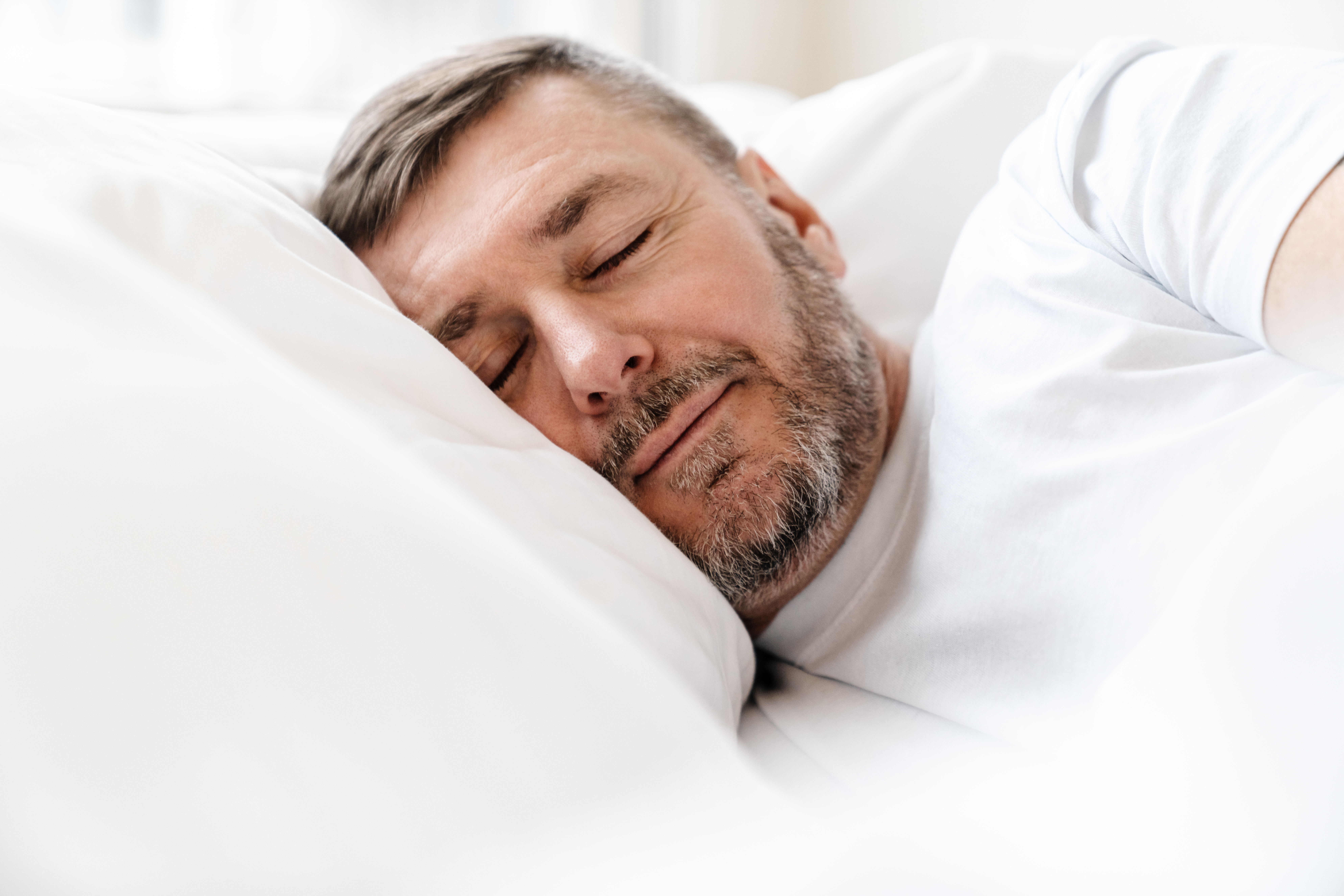
Sleep is more than just a rest period; it’s a crucial component of a healthy lifestyle.
The circadian rhythm orchestrates many cellular functions, such as cell division, cell migration, metabolism, and numerous intracellular biological processes. It effectively helps you regenerate, heal, and repair while you sleep.
To make the most of your sleep and wake up feeling refreshed and rejuvenated, it’s essential to establish a comprehensive sleep routine that covers everything from your bedtime to your wake-up routine. In this guide, we’ll explore the key elements of a successful sleep routine, including creating a sleep sanctuary, improving sleep quality, establishing a bedtime routine, maintaining good sleep posture and adult bedtime routines, and starting your day on the right foot.
Creating a Sleep Sanctuary
Your sleep environment, also known as your sleep sanctuary, plays a significant role in the quality of your sleep. Here are some tips for creating an optimal sleep environment:
Darkness: Invest in blackout curtains or use an eye mask to block out light, as darkness signals to your body that it’s time to sleep.
Quietness: Minimise noise disruptions by using earplugs or a white noise machine to create a peaceful environment.
Comfort: Choose a comfortable mattress and pillow that support your preferred sleep position.
Temperature:Keep your bedroom cool, ideally between 15 and 19 degrees Celsius, as cooler temperatures are conducive to sleep.
Clutter-Free: Declutter your bedroom and create a relaxing atmosphere that promotes calmness and serenity.
Quality of Sleep
Improving sleep quality involves creating the right sleep environment and adopting healthy sleep habits. Here are some strategies to enhance sleep quality:
Consistent Schedule: Go to bed and wake up at the same time every day, even on weekends, to regulate your body’s internal clock.
Limit Stimulants: Avoid caffeine, nicotine, and heavy meals close to bedtime, as they can interfere with sleep.
Screen Time: Minimise exposure to screens (phones, tablets, computers) before bedtime, as the blue light emitted can disrupt melatonin production.
Relaxation Techniques: Before bed, practice relaxation techniques such as deep breathing, meditation, or gentle yoga to calm your mind and prepare for sleep.
Bedtime Rituals: Establish a calming bedtime routine, such as reading a book, taking a warm bath, or listening to soothing music, to signal your body that it’s time to unwind.
Adult Bedtime Routines
Adults can benefit significantly from establishing a bedtime routine that helps them unwind and prepare for a restful night’s sleep. Here are some elements to consider incorporating into your bedtime routine:
Limit Screen Time: Avoid using electronic devices at least an hour before bedtime, as the blue light can disrupt your sleep-wake cycle. Instead, engage in relaxing activities such as reading a book, listening to calming music, or practising gentle yoga.
Mindfulness Practices: Incorporate mindfulness techniques such as meditation or deep breathing exercises to quiet your mind and reduce stress and anxiety before bed.
Prepare for the Next Day: Take a few minutes to plan and prepare for the next day, such as laying out clothes, packing your bag, or making a to-do list. This can help alleviate nighttime worries and promote a sense of organisation.
Avoid Stimulants: Steer clear of stimulants like caffeine and nicotine in the hours leading up to bedtime, as they can interfere with your ability to fall asleep and stay asleep.
Create a Relaxing Atmosphere: Dim the lights, play soothing music, or use aromatherapy with calming scents like lavender to create a tranquil environment that signals to your body it’s time to wind down.
Good Sleep Posture
Maintaining good sleep posture is essential for preventing aches, pains, and discomfort during sleep. Follow these tips for better sleep posture:
Back Sleepers: Opt for a pillow that supports your neck’s natural curve and aligns your spine. Avoid excessively high or flat pillows, as they can worsen snoring and discomfort, especially for those with an exaggerated back curve or neck pain. Placing a pillow under your knees can flatten the back, easing stress on lower back joints if you have pronounced lordosis.
Side Sleepers: Maintain a straight spine using a supportive pillow that aligns your neck with your spine; its height should match the space between your shoulder and neck. Incorrect pillow height may strain neck joints and nerves, leading to a pins and needles sensation in your hands. A firm pillow between your knees can prevent upper leg misalignment, reducing stress on the hips and the lower back.
Stomach Sleepers: This position tends to flatten the spine’s natural curve, potentially causing lower back pain. It can also strain the neck when turning your head to breathe. If avoiding this position is challenging, consider using a thin pillow or none to reduce neck strain. Placing a pillow under your lower abdomen can help maintain the spine’s natural curvature.
Mattress Support: Ensure your mattress provides adequate support tailored to your body type and preferred sleeping position. This support is crucial for maintaining proper spinal alignment throughout the night.
Therapeutic Pillow: A supportive pillow aligning your neck with your spine is beneficial; its height should match the distance between your shoulder and neck. Incorrect pillow height can strain neck joints and nerves, causing a sensation of pins and needles in your hands. Placing a firm pillow between your knees can prevent upper leg misalignment, thus reducing stress on the hips and the lower back.
Wake-Up Routine
Just as a bedtime routine is important, so is a wake-up routine to kickstart your day positively. Here are some tips for a refreshing wake-up routine:
Natural Light: Open your curtains or go outside to expose yourself to natural light, which helps regulate your circadian rhythm and wakefulness.
Hydration: Drink a glass of water when you wake up to rehydrate your body after a night of sleep.
Movement: Incorporate gentle stretching or a short exercise routine to invigorate your body and mind.
Mindfulness: Practice gratitude, journaling, or meditation to set a positive tone for the day ahead and reduce stress.
Healthy Breakfast: Fuel your body with a nutritious breakfast to provide energy and sustain focus throughout the day.
Conclusion
By integrating these elements into your sleep routine – from creating a tranquil sleep sanctuary to maintaining good sleep posture, improving sleep quality, establishing a bedtime routine, incorporating adult bedtime rituals, and kickstarting your day with a refreshing wake-up routine – you can experience the profound benefits of restorative sleep and enhance your overall health and well-being. Consistency and mindfulness in your sleep habits can lead to a happier, more energised life.
Chiropractic Life’s Commitment
At Chiropractic Life, we deliver on our commitment to holistic wellness by offering neurostructural corrective chiropractic at our practices across Australia and New Zealand. Our approach focuses on correcting and realigning the spine and posture. This enables the nervous system to be free from interference and the brain to receive feedback from the spine and deliver the right information to the body through optimum brain-to-body communication.
As part of our service, we can also provide access to orthotics and tools to improve your sleep. Speak with your Chiropractor about getting fitted for a pillow or other techniques to improve your sleep posture.
Explore www.chiropracticlife.com.au/locations to find a convenient location near you.
Optimise your brain-to-body connections today with Chiropractic Life.
References:
Bass J, Takahashi JS. Circadian integration of metabolism and energetics. Science. 2010 Dec 3;330(6009):1349-54. doi: 10.1126/science.1195027. PMID: 21127246; PMCID: PMC3756146.
Chaput JP, Dutil C, Featherstone R, Ross R, Giangregorio L, Saunders TJ, Janssen I, Poitras VJ, Kho ME, Ross-White A, Zankar S, Carrier J. Sleep timing, sleep consistency, and health in adults: a systematic review. Appl Physiol Nutr Metab. 2020 Oct;45(10 (Suppl. 2)):S232-S247. doi: 10.1139/apnm-2020-0032. PMID: 33054339.

Recent Comments